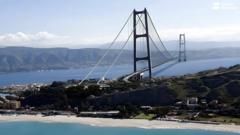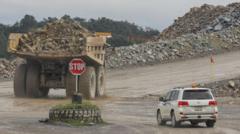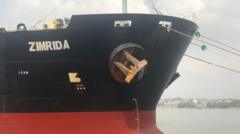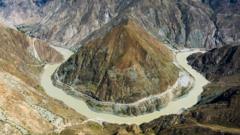As the demand for critical minerals rises due to technology needs, the U.S. is contemplating seabed mining operations, igniting debates over legality and ecological impact.
U.S. Moves Toward Seabed Mining Ventures Near American Samoa

U.S. Moves Toward Seabed Mining Ventures Near American Samoa
The Interior Department is set to evaluate a mining proposal for valuable minerals off American Samoa, raising legal and environmental concerns.
The U.S. Interior Department announced on Tuesday its intent to assess a proposal from Impossible Metals, a California-based firm, aimed at the extraction of valuable metals from the ocean floor close to American Samoa. This announcement marks a significant step toward commercial seabed mining, propelled by an executive order last month aimed at speeding up permit processes for mining activities in both U.S. territorial and international waters.
The seabed is believed to be rich in potato-sized nodules that hold essential minerals like nickel, cobalt, and manganese — materials that are crucial for advanced technologies deemed vital for U.S. economic and military strength. As global supplies of these minerals become limited and increasingly dependent on China, U.S. officials express urgency in tapping into domestic resources.
However, no large-scale seabed mining has yet been successfully executed, largely due to daunting technological challenges and significant environmental worries. Moreover, the international community is apprehensive, as various nations argue that the United States lacks legal entitlement to mine in international waters without established regulations and environmental safeguards.
Governments and environmental advocates have expressed outrage following President Trump's executive order, suggesting that it undermines established international law concerning seabed mining, stemming from a United Nations treaty that almost all nations, except the U.S., have ratified.






















